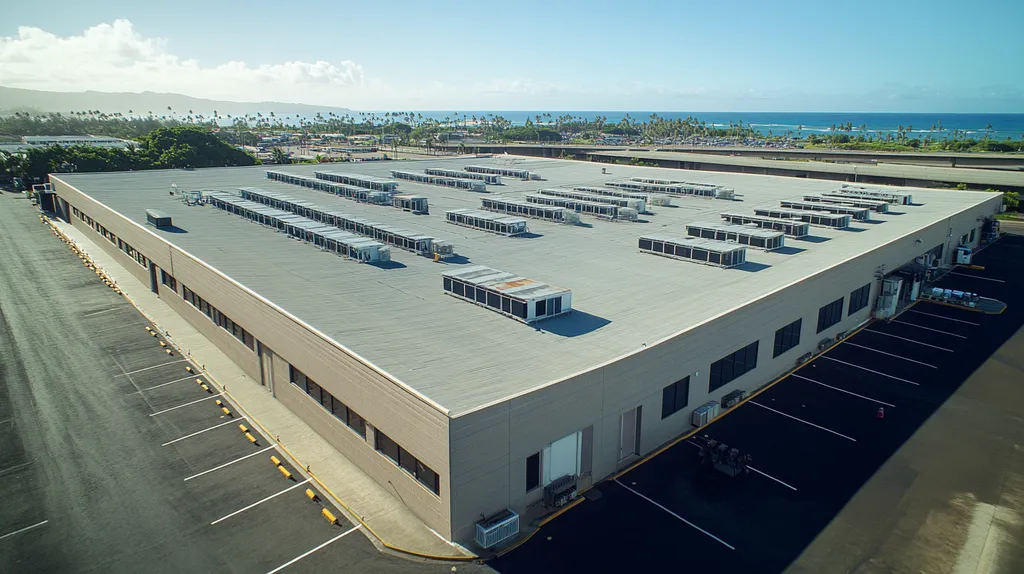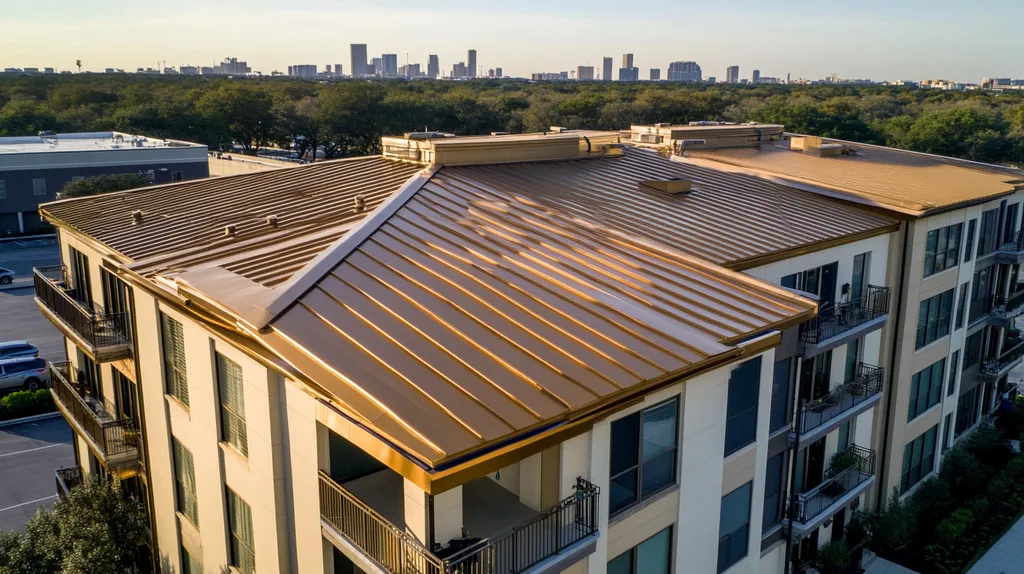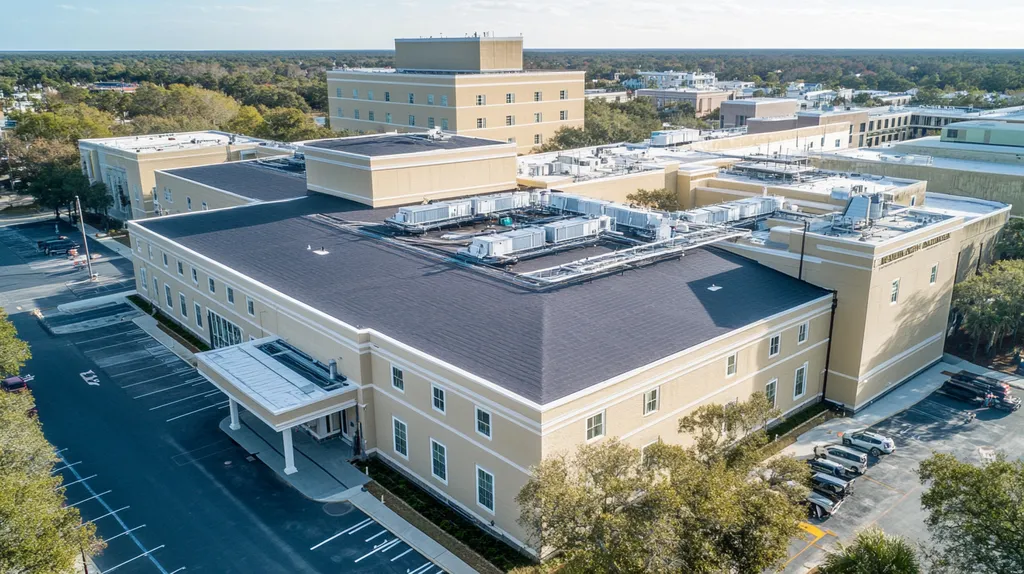Welcome to today’s Battle Royale featuring two roofing heavyweights: “Polycarbonate Skylights” in the east corner versus “Glass Skylights” in the west!
Tonight’s showdown pits these contenders against each other across six punishing rounds designed to test every aspect of their performance for Natural Lighting.
At stake? Millions in potential costs, decades of building protection, and the critical performance demands of modern commercial and industrial facilities.
Our professional judging panel will evaluate each round on technical merit, real-world performance, and value delivery. After all six rounds, we’ll declare our ultimate champion.
Ladies and gentlemen, facility managers and building owners… it’s time to rumble!
ROUND 1: INITIAL COSTS & INSTALLATION
When evaluating skylight options for commercial and industrial buildings, initial costs and installation complexities can significantly impact the project’s success. Natural lighting solutions through skylights can reduce artificial lighting needs by up to 80% during daylight hours, making the selection between polycarbonate and glass critical for long-term facility operations.
The decision between these materials affects not just upfront expenses, but also installation timelines, labor requirements, and overall project efficiency. Well-placed skylights can brighten up spaces and create pleasant atmospheres throughout the day, making material selection crucial for optimal results. (source: OConnor Roofing Buffalo)
Material Expenses
Material costs represent a substantial portion of any skylight project’s budget. Polycarbonate skylights typically cost 40-60% less than their glass counterparts, making them an attractive option for large-scale installations.
Glass skylights command premium prices due to their superior clarity and perceived longevity. However, their higher material costs often strain project budgets, particularly in expansive commercial applications.
The substantial price difference makes polycarbonate the clear choice for cost-conscious facility managers. While glass offers certain aesthetic advantages, its premium pricing can be prohibitive for many commercial projects.
In this category, polycarbonate skylights gain a decisive ADVANTAGE due to their significantly lower material costs.
Installation Complexity
Installation requirements dramatically affect both project costs and timelines. Polycarbonate skylights weigh approximately 75% less than equivalent glass units, reducing structural support requirements and simplifying handling procedures.
Glass skylights demand specialized lifting equipment and additional safety measures during installation. Their weight and fragility increase labor needs and installation complexity.
The technical challenges of glass installation often result in longer project durations and higher labor costs. Polycarbonate’s lighter weight and easier handling translate to streamlined installation processes.
Polycarbonate skylights earn another clear ADVANTAGE in installation complexity.
Project Timeline
Project duration significantly impacts facility operations and overall costs. Polycarbonate skylight installations typically complete 30-40% faster than glass installations, minimizing business disruption.
Glass skylight projects require more extensive preparation, careful handling, and longer installation periods. Weather sensitivity and additional safety protocols further extend installation timelines.
The efficiency gap between these materials becomes particularly evident in large-scale commercial applications. Faster completion times with polycarbonate translate to quicker return to normal operations.
Polycarbonate skylights secure an ADVANTAGE in project timeline considerations.
ROUND 1 WINNER: POLYCARBONATE SKYLIGHTS
ROUND 2: DURABILITY & LIFESPAN
Long-term performance determines the true value of commercial skylights, with durability and lifespan directly impacting operational costs. Research shows that premature skylight failure can increase energy costs by up to 30% and lead to extensive water damage. Making the wrong material choice often results in frequent replacements, structural issues, and compromised building integrity.
Material Strength
Impact resistance defines a skylight’s ability to withstand environmental stresses. Polycarbonate skylights offer 250 times the impact resistance of glass, making them virtually unbreakable under normal commercial conditions.
While tempered glass skylights provide four to five times the strength of standard glass, they remain vulnerable to impact damage. When glass skylights fail, they create immediate safety hazards and require costly emergency repairs.
Polycarbonate’s superior impact resistance translates to fewer replacements and reduced maintenance costs over time. This material strength difference becomes particularly evident in areas prone to severe weather or where roof access is frequent.
For material strength, polycarbonate skylights claim a clear ADVANTAGE.
Weather Resistance
Environmental exposure tests demonstrate that modern polycarbonate skylights maintain their structural integrity for 15-20 years under normal conditions. Their UV-resistant coatings prevent yellowing and degradation while maintaining light transmission levels.
Glass skylights typically last 20-25 years but face ongoing challenges with seal integrity and thermal stress. Temperature fluctuations can compromise glass panels and lead to premature failure, particularly in regions with extreme climate variations.
While both materials offer substantial lifespans, glass skylights show superior long-term performance when properly maintained. Their proven track record in weather resistance gives them an ADVANTAGE in this category.
Maintenance Requirements
Regular maintenance ensures optimal skylight performance and longevity. Polycarbonate skylights require basic cleaning and occasional reapplication of UV-protective coatings, typically every 5-7 years.
Glass skylights demand more frequent inspection and maintenance, including seal checking, frame repairs, and professional cleaning. Their complex glazing systems require specialized care to prevent water infiltration and maintain thermal efficiency.
The simplified maintenance needs of polycarbonate translate to lower ongoing costs and reduced facility disruption. This operational efficiency gives polycarbonate skylights an ADVANTAGE in maintenance requirements.
ROUND 2 WINNER: POLYCARBONATE SKYLIGHTS
ROUND 3: PERFORMANCE FACTORS
Performance factors constitute the most critical aspects of skylight selection for commercial and industrial facilities. Industry data shows that poor skylight performance can increase HVAC costs by up to 40% and create uncomfortable working conditions. The right choice between polycarbonate and glass directly impacts building efficiency, occupant comfort, and operational costs.
Energy Efficiency
Energy efficiency remains a primary concern for facility managers seeking to optimize building performance. Modern skylights must balance natural light transmission with thermal management to maximize energy savings.
Polycarbonate skylights feature multi-wall construction that creates insulating air spaces. This design delivers superior thermal performance, with R-values typically 20-30% higher than standard glass units.
Glass skylights, while offering excellent clarity, struggle with heat retention in winter and solar heat gain in summer. Even double-paned units cannot match the thermal efficiency of structured polycarbonate panels.
The superior insulation properties of polycarbonate give it a clear ADVANTAGE in energy efficiency.
Impact on Indoor Environment
Skylight performance significantly affects indoor comfort and workspace functionality. The right material choice can create optimal lighting conditions while minimizing glare and heat spots.
Polycarbonate panels diffuse incoming light, creating even illumination throughout the space. This natural light distribution reduces the need for supplemental artificial lighting while preventing harsh shadows and glare.
Glass skylights deliver maximum light transmission but can create problematic hot spots and glare zones. These issues often require additional modifications like screens or shades to maintain comfortable working conditions.
Polycarbonate’s superior light diffusion properties earn it an ADVANTAGE in indoor environmental impact.
Light Quality
The quality of natural light directly influences workplace productivity and occupant wellbeing. Different skylight materials affect both the quantity and quality of transmitted daylight.
Polycarbonate panels provide consistent, filtered light that reduces shadows and creates comfortable visual conditions. Their structured design naturally eliminates harsh direct sunlight while maintaining high overall light levels.
Glass skylights offer unmatched clarity and color rendering, delivering pure, unfiltered natural light. However, this clarity can lead to excessive brightness and uncomfortable glare without additional controls.
While both materials effectively transmit natural light, polycarbonate’s balanced performance gives it a slight ADVANTAGE in this category.
ROUND 3 WINNER: Polycarbonate Skylights
ROUND 4: MAINTENANCE REQUIREMENTS
Maintenance requirements significantly impact the total cost of ownership for commercial skylight systems. Industry data shows that improper maintenance can reduce skylight performance by up to 40% within five years, leading to increased energy costs and potential structural issues. Understanding the maintenance profiles of different skylight materials helps facility managers make informed decisions that affect long-term operational budgets.
Cleaning Requirements
Regular cleaning is essential for maintaining optimal light transmission and system performance. Polycarbonate skylights require only basic cleaning with mild soap solutions and can typically be maintained by in-house maintenance staff.
The structured surface of polycarbonate panels helps prevent dirt accumulation and makes cleaning procedures straightforward. Most installations need only quarterly cleaning in normal environments, with more frequent attention in highly polluted areas.
Glass skylights demand specialized cleaning solutions and often require professional services to prevent damage. Their smooth surfaces show dirt more readily and need monthly cleaning to maintain clarity and appearance.
Polycarbonate skylights earn an ADVANTAGE in cleaning requirements due to their lower maintenance demands and simplified procedures.
Repair Frequency
The frequency and complexity of repairs directly affect facility maintenance budgets. Polycarbonate skylights rarely require repairs due to their high impact resistance and flexible nature, typically needing attention only for seal maintenance every 3-5 years.
When repairs are necessary, polycarbonate panels can often be serviced without complete replacement. Their lightweight nature makes repairs less labor-intensive and more cost-effective.
Glass skylights frequently require repairs due to thermal stress cracks, seal failures, and impact damage. These repairs often involve complete panel replacement, requiring specialized equipment and creating significant facility disruption.
For repair frequency, polycarbonate skylights claim a clear ADVANTAGE.
Long-term Care
Sustained performance depends on proper long-term maintenance protocols. Polycarbonate skylights need periodic UV-protective coating renewal, typically every 7-10 years, to maintain their protective properties.
The simple structure of polycarbonate systems makes preventive maintenance straightforward. Regular inspections can easily identify potential issues before they become serious problems.
Glass skylights require constant monitoring of complex glazing systems and frame components. Their multiple seals and connection points create more potential failure locations that demand regular professional inspection.
In long-term care considerations, polycarbonate skylights secure another ADVANTAGE.
ROUND 4 WINNER: Polycarbonate Skylights
ROUND 5: SUSTAINABILITY CREDENTIALS
Sustainable building practices have become critical drivers of commercial construction decisions, with skylight material selection significantly impacting environmental performance. Buildings account for nearly 40% of global energy consumption, making efficient natural lighting solutions essential for reducing environmental impact and operational costs.
The choice between polycarbonate and glass skylights affects not just immediate energy usage, but also long-term resource consumption and carbon footprint. Understanding these sustainability implications helps facility managers make environmentally responsible choices that align with corporate environmental goals.
Energy Efficiency
Skylight energy performance directly affects building efficiency and operational costs. Multi-wall polycarbonate panels provide superior thermal insulation, with R-values typically ranging 40-60% higher than standard glass units.
Polycarbonate’s structured design creates air chambers that minimize heat transfer, reducing HVAC loads during both heating and cooling seasons. This thermal efficiency translates to measurable energy savings and reduced carbon emissions.
Glass skylights, while offering excellent visible light transmission, struggle with thermal management. Even advanced low-E coatings and double-pane construction cannot match polycarbonate’s inherent insulating properties.
For energy efficiency, polycarbonate skylights claim a clear ADVANTAGE.
Environmental Impact
Material production and lifecycle environmental impact significantly affect a building’s sustainability profile. Polycarbonate skylights require less energy to manufacture and transport due to their lighter weight and simpler production process.
The manufacturing flexibility of polycarbonate allows for optimal material usage and minimal waste. These panels can be precisely engineered to specific dimensions, reducing cutoff waste during installation.
Glass skylight production demands intensive energy input and creates more manufacturing waste. Their heavier weight also increases transportation energy requirements and associated carbon emissions.
Polycarbonate skylights secure another ADVANTAGE in environmental impact.
Recyclability and Reuse
End-of-life material management increasingly influences sustainability ratings and certifications. Polycarbonate skylights can be fully recycled into new products, supporting circular economy principles.
The uniform composition of polycarbonate panels simplifies the recycling process. When removed during renovations or replacements, these materials can be efficiently processed without complex separation procedures.
Glass skylights, while theoretically recyclable, often contain multiple materials and components that complicate recycling efforts. Their fragile nature also increases the likelihood of waste during removal and handling.
In recyclability considerations, polycarbonate skylights earn another ADVANTAGE.
ROUND 5 WINNER: POLYCARBONATE SKYLIGHTS
ROUND 6: SPECIALIZED APPLICATIONS
Specialized applications in commercial and industrial settings demand careful consideration of skylight materials, as poor choices can lead to operational disruptions and safety hazards. Studies show that inadequate natural lighting solutions in specialized environments can reduce worker productivity by up to 15% while increasing accident rates.
The selection between polycarbonate and glass skylights becomes particularly critical in facilities with unique operational requirements, specialized equipment, or extreme environmental conditions. These decisions impact not just lighting quality but also workplace safety and operational efficiency.
Manufacturing Environments
Manufacturing facilities present unique challenges for natural lighting solutions, requiring materials that can withstand vibration, airborne particles, and varying temperature conditions. Polycarbonate skylights excel in these environments due to their superior impact resistance and ability to maintain structural integrity under constant mechanical stress.
The multi-wall construction of polycarbonate panels provides excellent diffusion of natural light, reducing shadows and glare that could affect precision manufacturing processes. Their chemical resistance also protects against common industrial pollutants and cleaning agents.
Glass skylights struggle in manufacturing settings due to their vulnerability to impact damage and tendency to create focused light spots that can interfere with automated systems. Their rigid structure makes them susceptible to stress fractures from constant vibration.
For manufacturing applications, polycarbonate skylights earn a clear ADVANTAGE.
Cold Storage Facilities
Temperature-controlled environments require exceptional thermal performance from skylight systems. Polycarbonate’s multi-wall structure creates superior insulation, helping maintain consistent temperatures while preventing condensation issues common in cold storage applications.
The thermal efficiency of polycarbonate panels reduces the strain on cooling systems and minimizes energy loss. Their lightweight nature also decreases structural load requirements, particularly important in refrigerated warehouses.
Glass skylights face significant challenges in cold storage environments, often developing seal failures due to extreme temperature differentials. Their higher thermal conductivity can create cold spots and condensation problems that compromise facility operations.
Polycarbonate skylights secure another ADVANTAGE in cold storage applications.
High-Traffic Areas
Areas with frequent roof access or exposure to maintenance activities require durable skylight solutions that can withstand regular foot traffic and equipment contact. Polycarbonate skylights offer exceptional durability and can often withstand direct contact without damage.
The flexible nature of polycarbonate allows it to absorb impacts without cracking or shattering. This characteristic makes it ideal for installation near HVAC units, ventilation systems, and other rooftop equipment requiring regular maintenance.
Glass skylights demand extensive protection measures in high-traffic areas, including safety screens and walkway systems. Their brittleness and tendency to shatter create ongoing safety concerns and maintenance challenges.
In high-traffic applications, polycarbonate skylights claim another ADVANTAGE.
ROUND 6 WINNER: Polycarbonate Skylights
AND THE WINNER IS…
Ladies and gentlemen, after six grueling rounds of technical combat, we have a decisive victory! In a stunning display of versatility and value, POLYCARBONATE SKYLIGHTS emerge as our undisputed champion, winning all six rounds of this intense matchup!
The champion dominated with a combination of cost-effective performance, superior durability, and exceptional thermal efficiency. Polycarbonate’s knockout advantages in maintenance requirements, sustainability credentials, and specialized applications proved too powerful for its prestigious opponent to overcome.
But don’t count glass skylights out entirely! In prestigious architectural applications where absolute clarity and premium aesthetics are paramount, glass remains a formidable contender worthy of consideration.
*Important Championship Committee Notice*
Remember that every facility faces unique challenges based on local climate, building design, and operational requirements. While this analysis reflects general performance characteristics, individual building conditions may alter these outcomes. Always consult qualified roofing professionals who can evaluate your specific situation before making final material selections.
And there you have it, folks! But in the high-stakes arena of commercial roofing, true victory comes not from following the crowd, but from selecting the skylight solution that best answers your facility’s unique challenges. Choose wisely, champions!
FREQUENTLY ASKED QUESTIONS
Q. What are the initial costs for commercial roof skylights?
A. Initial costs vary significantly between polycarbonate and glass skylights. Polycarbonate options usually cost 40-60% less, making them appealing for commercial projects. When calculating total costs, consider installation complexity and material expenses, which can also influence your overall budget.
Q. How do durability and lifespan compare for industrial roof skylights?
A. Polycarbonate skylights typically offer greater impact resistance than glass, lasting longer in demanding environments. While glass skylights may last 20-25 years, polycarbonate can endure harsher conditions without frequent replacements, leading to lower long-term operational costs.
Q. What performance factors should I consider for skylights on my commercial roof?
A. Key performance factors include energy efficiency, impact on indoor environment, and light quality. Polycarbonate skylights generally offer better thermal insulation, reduce glare, and ensure consistent light diffusion, improving overall workplace comfort and energy savings.
Q. How often do I need to maintain my industrial roof skylights?
A. Maintenance frequency varies by material; polycarbonate skylights require basic cleaning every 5-7 years. In contrast, glass skylights need more regular inspections and monthly cleaning to ensure clear light transmission and prevent structural damage from seal failures.
Q. How do polycarbonate and glass skylights impact sustainability for commercial buildings?
A. Polycarbonate skylights are generally more sustainable due to better energy efficiency and recyclability. They require less energy to manufacture and transport, which helps reduce a building’s carbon footprint. Glass skylights often have higher production energy needs and complex recyclability issues.
Q. What specialized applications benefit most from polycarbonate skylights?
A. Manufacturing and cold storage facilities often benefit from polycarbonate skylights. They provide greater durability and thermal performance, reducing HVAC loads and preventing condensation. Their impact resistance is ideal for high-traffic areas and environments with frequent maintenance activities.
Q. Can natural light from skylights reduce energy costs in commercial buildings?
A. Yes, skylights can significantly reduce energy costs by minimizing reliance on artificial lighting. Properly installed skylights can reduce artificial lighting needs by up to 80% during daylight, contributing to lower energy bills and improved overall building efficiency in commercial applications.











